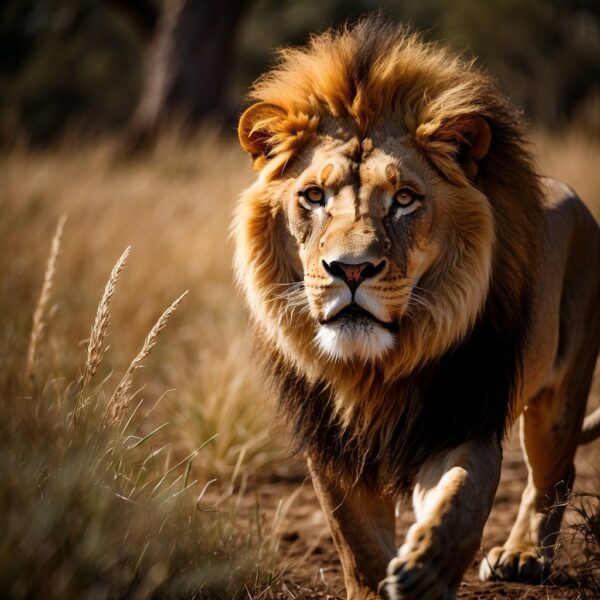
African Lions: Key Threats to Their Survival
The African lion, a symbol of strength and courage across multiple cultures is endangered, facing the threat of extinction. Listed as vulnerable by conservation authorities, the population of African lions has experienced a sharp decline in recent years. This is attributed to a combination of human-induced factors such as habitat loss, hunting, and conflict with local populations. The iconic big cat that once roamed much of Africa now finds itself confined to fragmented habitats, with estimates suggesting there are around 20,000 to 25,000 individuals remaining in the wild. This represents a significant drop from the historical figures where lions were abundant across the continent.
The challenges affecting the survival of African lions are manifold. They range from direct threats such as poaching for their bones and skins, to more indirect pressures like the encroachment of agricultural land on their natural territories. With savannas, shrublands, and semi-arid deserts being their main habitats, the competition for space becomes increasingly intense as humans expand their footprint. Moreover, the decline of their natural prey due to overhunting and habitat changes further exacerbates their endangerment. Conservation efforts are ongoing, aiming to safeguard the remaining lion populations through protected areas, community-based conservation projects, and promoting coexistence between lions and local communities.
Key Takeaways
- The African lion is classified as vulnerable with decreasing populations due to habitat loss and human conflict.
- Threats include poaching, loss of prey, and habitat fragmentation, all contributing to the risk of extinction.
- Conservation strategies are crucial for protecting remaining populations and ensuring the species’ survival.
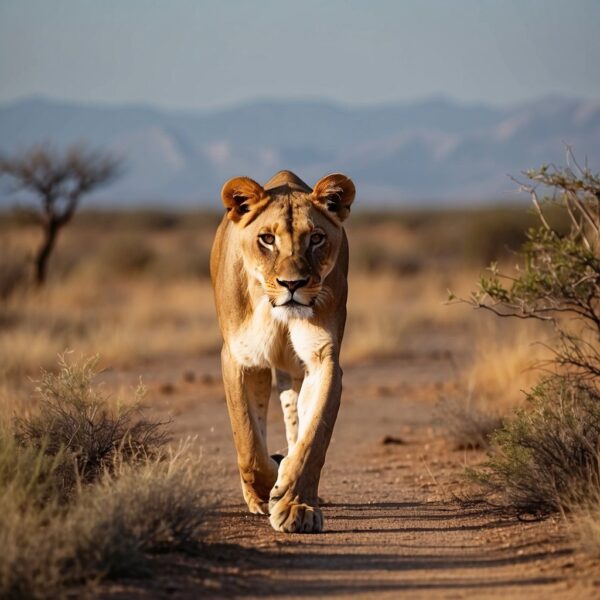
The Plight of the African Lion
The African lion is experiencing a severe decline in population, raising concerns over its status as a vulnerable species and the significant ecological implications of potential extinction.
Historical Population Trends
Historically, African lions roamed throughout much of Africa and Asia. In recent decades, the population of African lions (Panthera leo) has experienced a sharp decline. From once extensive numbers, scientific estimations reveal a 52 percent decline in East Africa and as much as an 85 percent reduction in West Africa.
Current Status and Distribution
Presently, the International Union for Conservation of Nature (IUCN) classifies the African lion as vulnerable, with certain populations hovering on the brink of being considered critically endangered. These big cats are now found in only 25 countries within Sub-Saharan Africa, with less than half of the 62 known remaining free-ranging populations containing over 100 lions each.
Genetic Distinction and Subspecies
Two main subspecies are recognized: the Asiatic lion, confined to a single reserve in India, and the African lion, which is further divided into regional populations such as the West African lion, which exhibits distinct genetic differences. These genetic distinctions are crucial for conservation as they affect how populations are managed and protected.
Ecological Importance
African lions play a pivotal role in their ecosystem as apex predators, ensuring a healthy balance by keeping herbivore populations in check. This presence of lions is essential for maintaining the diversity of wildlife and sustaining the health of the ecosystem, which directly and indirectly supports various other species, including vital prey animals.
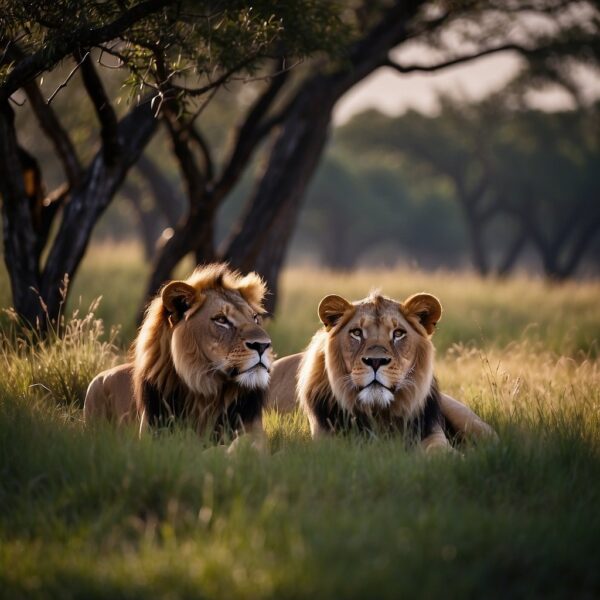
why African lion are Endangered: Threats to Survival
The survival of African lions is compromised by a range of human-induced factors, from habitat disruption to direct exploitation.
Habitat Loss and Fragmentation
Habitat loss, largely due to expanding human populations and agricultural development, is a critical threat to lions. In Sub-Saharan Africa, vast tracts of land are being transformed for agriculture, reducing the wildlife’s natural habitat. Habitat fragmentation further isolates lion populations, impeding genetic exchange and reducing their resilience to other threats.
Human-Wildlife Conflict
Lions often come into conflict with humans living in proximity to their habitats. As lions lose their natural prey, they increasingly predate on livestock, leading to retaliatory killings by farmers. These conflicts are detrimental to lion conservation efforts and often result in the loss of lion lives.
Prey Base Decline
Overhunting and changes in land use have led to a decline in the populations of prey species like antelope and wild dogs. The depletion of the prey base forces lions to compete fiercely for food, contributing to their dwindling numbers.
Illegal Wildlife Trade and Poaching
Lions are also victims of illegal wildlife trade, where their body parts are sought for various purposes. Poaching not only reduces their numbers directly but also indirectly by targeting their prey for bushmeat, further straining the lions’ food resources. Despite conservation efforts and protected areas, these illegal activities continue to pose a significant threat to lion populations.
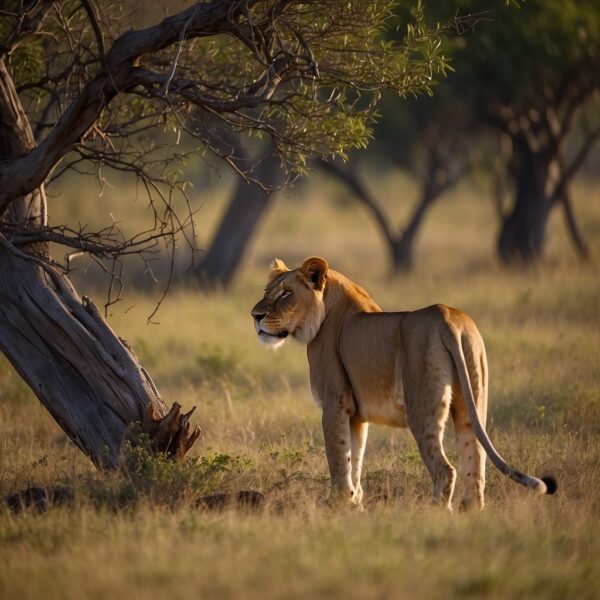
Conservation Efforts
Efforts to save the endangered African lion involve a multi-faceted approach, tackling legal, communal, habitat, and scientific challenges to reverse their decline.
Legal Protection and Wildlife Laws
In order to shield African lions from further endangerment, various countries have implemented legal protection measures and wildlife laws. These regulations are aimed at curbing illegal wildlife trade and poaching activities. For instance, the international community recognizes African lions under CITES (the Convention on International Trade in Endangered Species of Wild Fauna and Flora), which helps regulate their trade and discourages illegal activities by imposing strict penalties.
Community Engagement and Education
Community engagement and education are critical as they involve local populations in conservation efforts. Programs are designed to inform pastoralists and communities living near lion habitats about the importance of lion conservation. The goal is to transform human-wildlife conflict into coexistence strategies, leveraging incentives such as photographic tourism which can contribute to management budgets for protected areas.
Habitat Restoration and Corridors
The restoration of lion habitats is vital for the conservation of African lions. Protected areas like savannas are being expanded and linked through habitat corridors to allow for the safe passage of lions between regions, which is essential for maintaining genetic diversity and healthy prides. Conservation organizations collaborate with governments to manage these areas, balancing ecological needs with local economic interests.
Research and Monitoring
Continuous research and monitoring are pivotal for evaluating the efficacy of conservation strategies. Surveys and studies by conservation groups provide insights into lion population dynamics and threats. Sophisticated tracking methods and ecological models are key tools in understanding the movements and health of lion prides, which in turn inform conservationists and policy-makers about where to focus their efforts and resources.
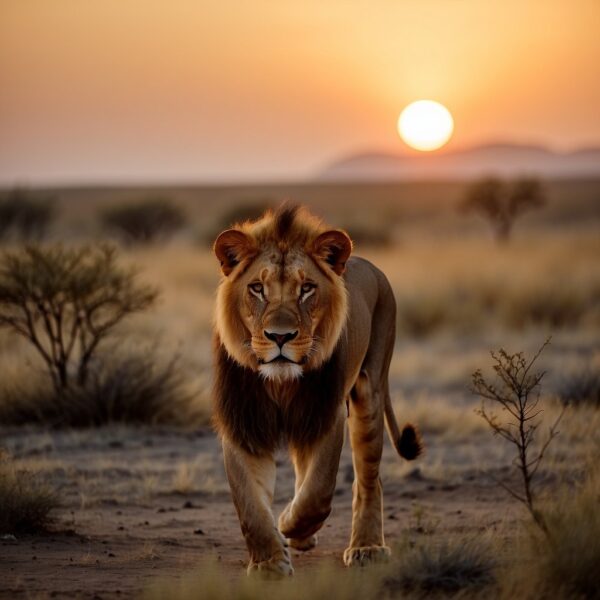
why african lions are endangered: Frequently Asked Questions
African lions face many threats that have led to their status as endangered species. This section addresses the common queries surrounding their decline and conservation.
What factors contribute to the decline in African lion populations?
Several factors contribute to the decline, including habitat loss due to expansion of human settlements, poaching, and a reduction in their prey base. Isolation of lion populations also hampers genetic diversity and viability.
How does human activity impact the survival of lions on the African continent?
Human activities such as agriculture, settlement expansion, and infrastructure development have drastically reduced and fragmented lion habitats. Additionally, human-wildlife conflict, especially retaliation for livestock predation, further threatens lion survival.
What conservation efforts are currently in place to protect endangered lion species in Africa?
Conservation efforts include habitat restoration, anti-poaching initiatives, and community outreach programs aimed at reducing human-lion conflicts. Transnational conservation projects are also working to create wildlife corridors to connect fragmented habitats.
Can you explain the significance of lions within ecosystems and their role as apex predators?
As apex predators, lions play a critical role in maintaining the structural integrity of their ecosystem by regulating prey populations. Their presence ensures a balance that supports biodiversity and healthy ecosystems.
How has the number of African lions changed over time, and what predictions can be made for their future?
African lion populations have plummeted by over 40% in the last three generations, with lions now occupying only a fraction of their historic range. Without significant conservation action, their numbers are likely to continue declining.
Which lion species face the highest risk of extinction, and what are the reasons for their vulnerability?
The West African lion population and the Asiatic lion are among the most vulnerable, with extremely limited ranges and small population sizes. The causes for their vulnerability mirror those of African lions, including habitat loss and human-wildlife conflict.